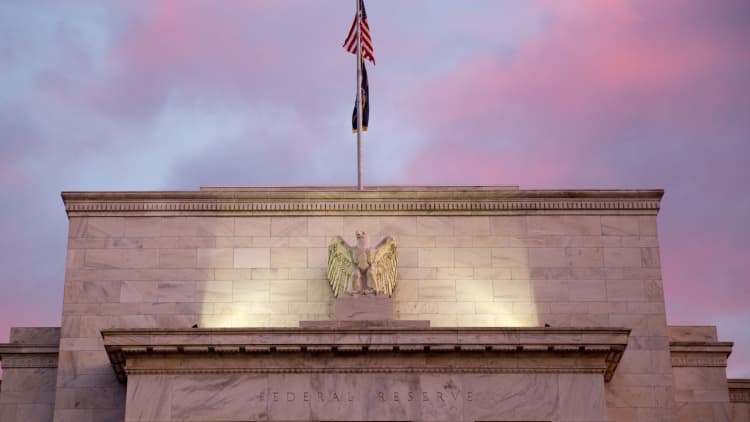


After ripping higher, U.S. Treasury yields could be set for a pullback, but it could be temporary and strategists expect rates to trade in a new, higher range this summer.
German bund yields are seen as the most dominant driver of Treasurys for now, while strategists say a heavy corporate issuance calendar is also fueling selling in Treasurys.
"I think we're closer to the highs of the year than not. I think we're having a rate adjustment.... I think we're going to go higher than 2.60, but I don't know if we're going much higher," said John Briggs, head of strategy at RBS.
Treasury yields followed bund yields higher Wednesday, and the U.S. 10-year hit a high of 2.49 percent, as its German counterpart traded above 1 percent. U.S. rates later came off their highs, and the Treasury Department auctioned $21 billion in 10-year notes at a yield of 2.461 percent, the highest at an auction since September.
Even though strategists see yields trending higher, they don't see them moving that much higher, and some believe the trade will be more of a curve flattening move than a move higher at the long end.
"We have come a long way. It wouldn't surprise me to see a little bit of a correction, at some point," said Arthur Bass, managing director at COEX Partners. "But I think people will be looking to sell the upticks."
Bass expects the 10-year could yield could move as high as 2.75 percent by the end of the summer.
"We don't know what happens next week, but I think part of this decline was really a combination of bad positions, Germany and corporate supply," said Bass. Investors sell Treasurys to hedge and also to clear space for more corporate issuance.
Cisco issued $5 billion in bonds Wednesday, and British American Tobacco had a $4.5 billion deal. Year-to-date, corporate issuance was at $655.8 billion, 19 percent ahead of last year's pace during the same period, according to Informa Global Markets.
"I think Germany started the thing off but even when they stabilized for a few days, we still had pressure," said Bass. "If I were a corporate chairman, I would be speaking to my treasurer if he wasn't loading up on debt at these levels. Every corporate treasurer should be saying, 'Do we have room?' "
CRT Capital surveyed about 50 institutions and funds that invest in the Treasury market about rate expectations and asked what they believe is driving the market.
For August, the investors expect the 10-year yield to range between 2 percent and 2.85 percent, with the consensus at 2.57 percent. That is a month before the Fed's September rates meeting, where many on Wall Street believe the Fed could raise interest rates.
The average expectation for the 10-year yield came to 2.8 percent for November.
"There were a number of respondents who felt yields would fall after the September FOMC and a large group that felt they would largely trade sideways," wrote CRT chief Treasury strategist David Ader.
Read MoreCashin: Fed could cause spontaneous combustion in bonds
The U.S. Treasury market has been tethered to Europe, as the European Central Bank earlier this year committed to an easy money policy, the opposite direction U.S. central bankers are expected to take. In contrast, U.S. Treasurys were higher yielding and relatively more attractive, but now as Europe has sold off, the U.S. is going with it.
Traders say the rapid move in the U.S. market shows a detachment from fundamentals, and the move in Treasurys itself could take on a life of its own.
Read MoreGundlach: Fed won't raise rates this year
CRT Capital said Europe was the most popular reason cited for the move higher in yields, with 34 percent citing European positions.
Nearly 16 percent blamed improvements in economic data, and another 12.1 percent pointed to the unusually high level of corporate issuance.
Market liquidity was blamed by 14.1 percent, and another 10.4 percent pointed to the Fed.


